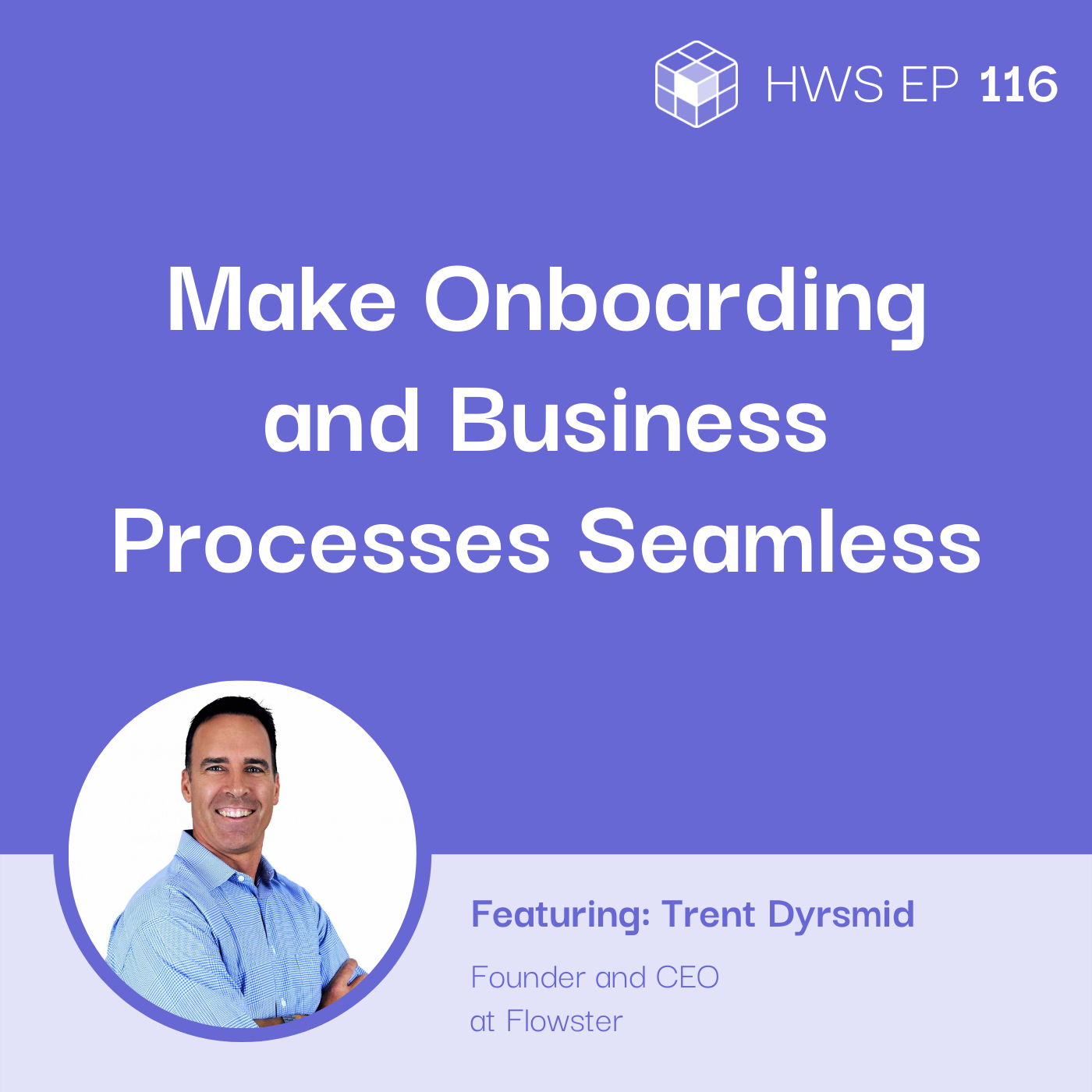Listen on:
Table of Contents:
Problem: How do you make onboarding seamless, and business processes run like clockwork?
Company founders know from experience that you are likely working long hours to build a successful company. You’re constantly overwhelmed with tasks, and there is never enough time to get them all done. A new business challenge requires you to either invest time into researching the most viable solution or work with experts to help you solve these problems. Either way, you are investing considerable time and money. What if you could get a simple guide that outlines a framework on how to navigate these challenges and then allow you to tweak existing processes to fit the nuances of how your business is run? What if there’s a way you can lessen the time you spend on teaching employees how you need things done, SOPs, and streamlining business processes? That way, you can focus on the things that matter, expanding and growing your business. How do you make onboarding seamless, and business processes run like clockwork?
The way most small businesses run, they just kind of wing it. And the reason they stay a small business is because the baker spends all day baking bread. And he’s got a few assistants baking bread, but nobody’s thinking about what do we get to do to make the bakery bigger.
Understanding the Difference Between Business Processes and Project Management
When choosing automation tools and work dashboards, keep in mind that parts of the business can be replicated. This is known as process management. On the other hand, project management is a long-term endeavor aimed at improving business performance. Separating these two is crucial for creating seamless workflows. As a CEO, it will be good to make it your goal to delegate these routine tasks to others and to spend less time teaching the SOPs to the rest of the team.
There’s a difference between process management and project management, which I should explain because it’s not immediately obvious to newer founders. So, a process is a repetitive thing that, you know, the steps in advance, and you’re going to do it over and over. Prospecting is a process. Uploading a video to YouTube is a process. Making a post on social media is a process. Keyword research is a process. Generating a backlink is the process of publishing a podcast episode. There’s a gazillion thing. You just do them over and over and over, so Flowster is built to solve that problem to give you a platform. For your process management. Now, what a project management project is, it’s different. It’s about, “I want to make some improvement in my business”.
Tip # 1: List down all of your business processes and SOPs
To begin removing the legwork from your day-to-day, document all of your linear processes first. Then, create a video or guide that explains these steps and integrates them into your onboarding process. Flowster allows you to document the process step-by-step, and they’ll be introducing a video function by March that will allow you to capture all the movement on the screen through video.
How do you make an SOP? First of all—two things, number one, how do you know what you should make an SOP for so you can delegate it? And then how do you do that? So let’s deal with those in that order. Think of any type of task that doesn’t require the judgment that comes from years of experience in the field. And there are lots and lots of things that apply to that. Those are the low-hanging fruit to turn into an SOP. There’s a lot of judgment that’s required, and especially judgment that comes from years of experience. So start with what I call the linear processes or the binary processes.
Tip # 2: Promote accountability and responsibility
It’s equally important to get everybody on board for any movement on the tasks to promote responsibility and accountability. Giving a detailed brief is one thing, but setting deadlines and reminding everyone make sure that the team is on the same page. Moving deadlines can’t be avoided, especially if there are dependencies on the tasks in the process. But, it’s important to have checkpoints to track progress.
Make sure that not only do you have clearly detailed instructions on how to do all this stuff. But also, the software will make sure that everybody is notified that there’s a new episode and there are due dates, and they got to get such and such done by such and such date. And if you want your processes to flow smoothly, of course, you need all that accountability. That’s what the Flowster software is designed to do. It’s meant to give you the ability to assign tasks to people to give them due dates and get alerts when things are past due or approaching the due date or what have you.
Tip # 3: Lessen meetings, use change management workflows
Eliminate unnecessary meetings for yourself and your team. Align everybody by communicating and applying these changes to the rest of the workflow. It is a feature Flowster provides. Making sure the whole workflow is updated the moment tasks change helps everyone get on board without having to meet.
You have six active workflows. That our team is working their way through that is based on this template. You’ve just changed the template. Would you like me to update all the workflows as well? And the answer 99% of the time is going to be yes. So, what have I accomplished? I’ve accomplished something very significant. It’s called change management, and it’s painless. I didn’t have to have a meeting. And if your employees are spread around different times zones having a meeting’s a pain in the ass. I didn’t have to make a zoom video or anything.
Tips for CEOs: Get the $10.00 Tasks Out of Your System
CEOs should spend their time on projects that will shape the future of their companies. Work on projects that will benefit the most from your expertise and experience. Identify where your time is being spent. If most of it goes to the $10.00 per hour tasks, it would be impossible to scale the business. So focus on working on the tasks that are really worth your time.
Well, this is a $10 an hour task, and this is a $100 an hour task. Just work on getting rid of all the $10 an hour tasks that are in your daily routine. And then, after a period of time, you’re only going to be doing the $1000 an hour tasks, and you’re going to have a hell of a business as a result of that.
Trent Dyrsmid Recommends You to Read Up on Automating Workflows at Flowster
- Flowster Blog
- Free Playbooks
This interview is part of the How We Solve podcast. To hear more from industry experts who are solving everyday business problems, check us out on Spotify, Apple Podcasts, and on our website.
About the guest

Trent Dyrsmid
Trent Dyrsmid Is a serial entrepreneur, husband, and father. He is the founder of BrightIdeas.co, Flowster.app and a 7 figure eCommerce business. With almost ten years of experience with digital marketing and eCommerce, Trent eagerly shares his knowledge with others. Currently, he is helping founders, executives, and managers to create Standard Operating Procedures (SOPs), workflows, and automated processes so that hiring, onboarding, and delegation become dramatically easier and less expensive.
How people can people reach the guest:
Official Website: Flowster Official Website (affiliate link)
LinkedIn: Trent Dyrsmid on LinkedIn | Flowster App Company Page
Twitter: @TrentDyrsmid | @FlowsterApp
Facebook: Flowster App
Instagram: flowsterapp
Speaker Profile: Trent Dyrsmid at Bright Ideas Co
Listen on:
